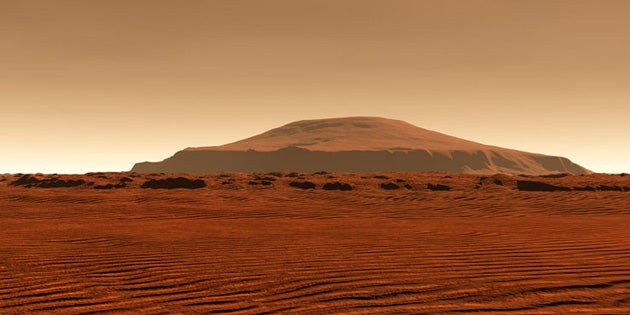Researchers at the College of Charleston are beginning to unravel some of the many mysteries surrounding the largest volcano in the solar system.

Olympus Mons volcano
Olympus Mons volcano on Mars is over 14 miles high and has a diameter of over 350 miles, but not much is known about the recent history of the volcano, including when it stopped erupting.
Until now.
Geology professor John Chadwick and College of Charleston students Mariel Simpson and Ashleigh Reeves have been analyzing the orientations of hundreds of lava flows around the base of Olympus Mons in satellite images. They soon discovered that the lava flows are no longer oriented in their original downhill directions.
Chadwick says this indicates that the volcano is so bulky that the crust around it has buckled, effectively creating a basin that the volcano now sits in. In other words, the volcano is so heavy it is sinking into the crust of Mars.
”The crust of Mars is much thicker than the Earth’s,” says Chadwick. “The volcano is so massive that it has pushed the crust downward and changed the topography of the landscape that surrounds it. The coolest thing is that by analyzing the density of impact craters on the lava flows, we can measure the time frame that Olympus Mons was still volcanically active, still growing and adding lava and weight to itself.”
The researchers have revealed that this buckling happened in the past 200 million years, indicating that Olympus Mons was still volcanically active and growing at this time.
“It was fascinating to work with the NASA satellite images of Mars and to unravel the mysteries of this giant volcano,“ said Reeves, one of Chadwick’s student researchers.
The results of this current research project have been published in the Journal of Geophysical Research – Planets.




